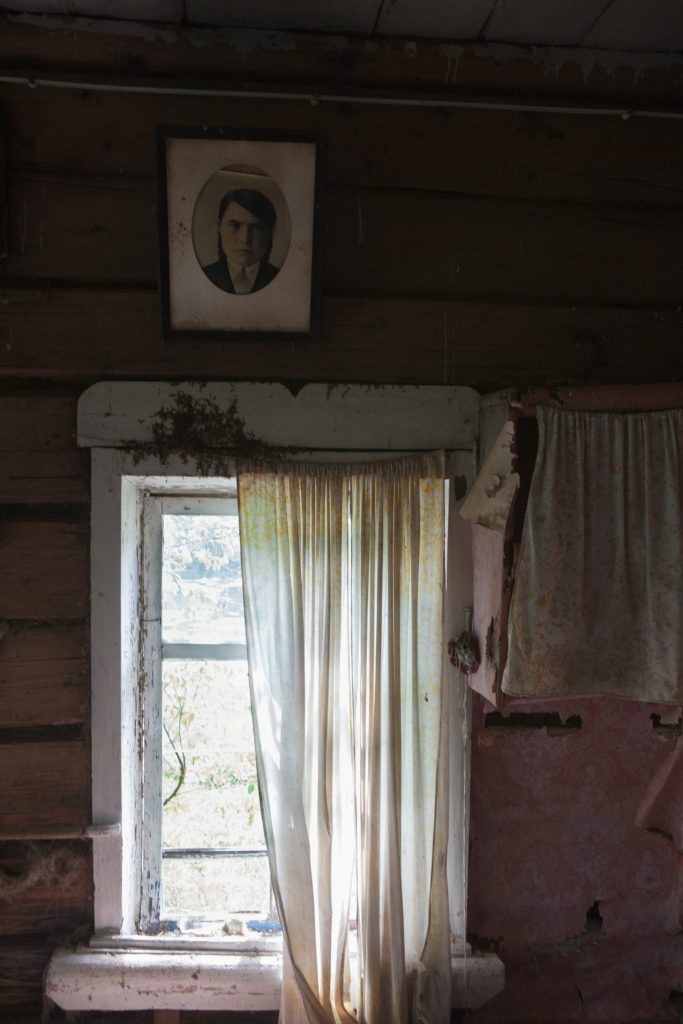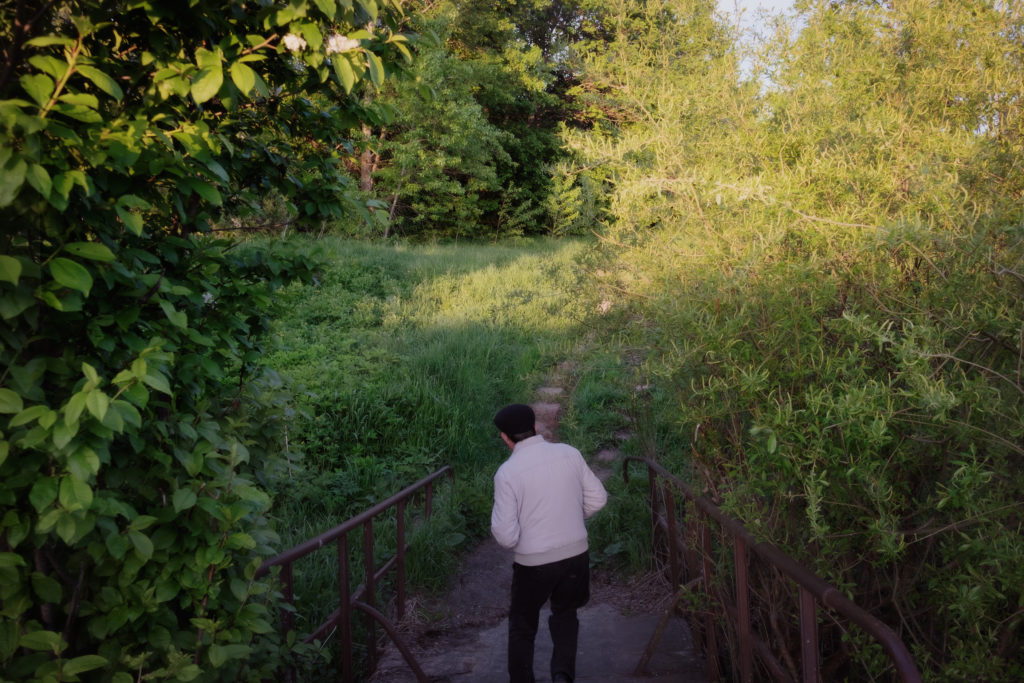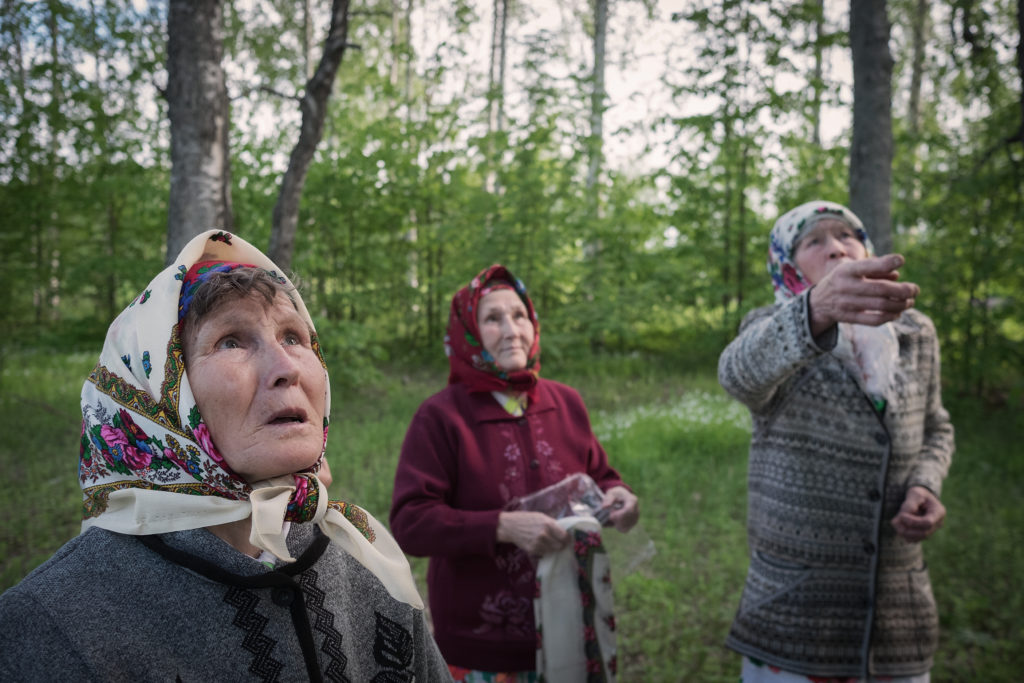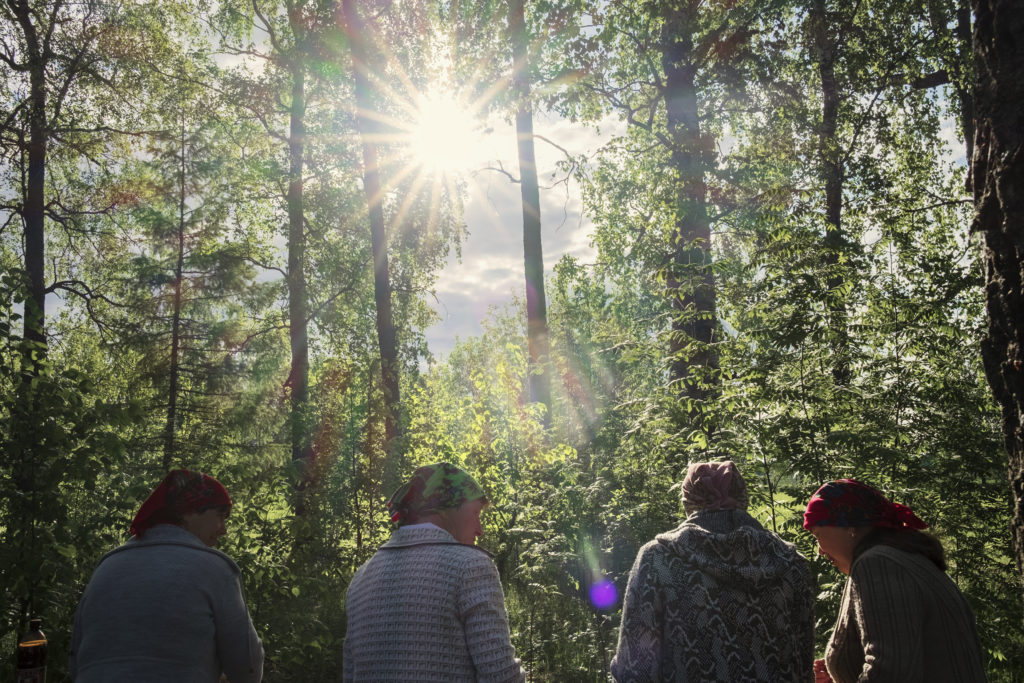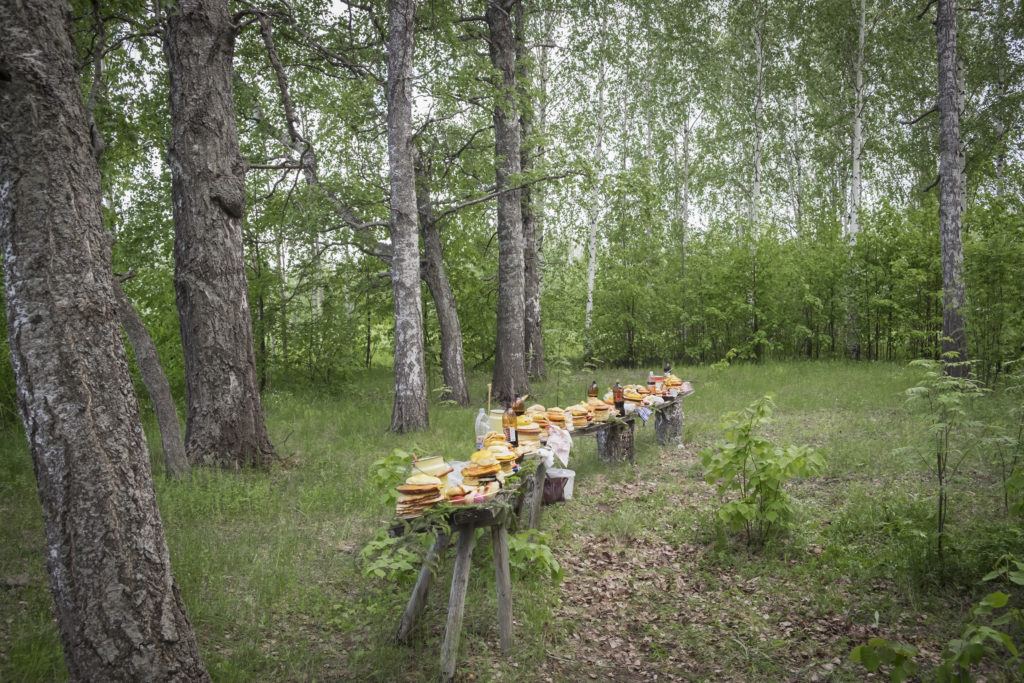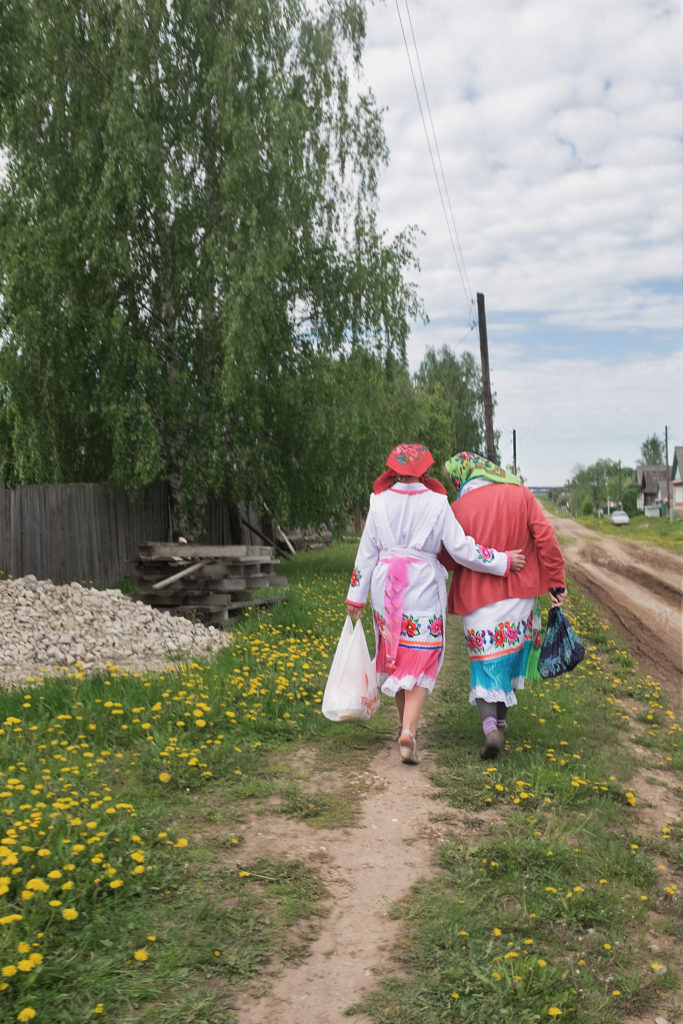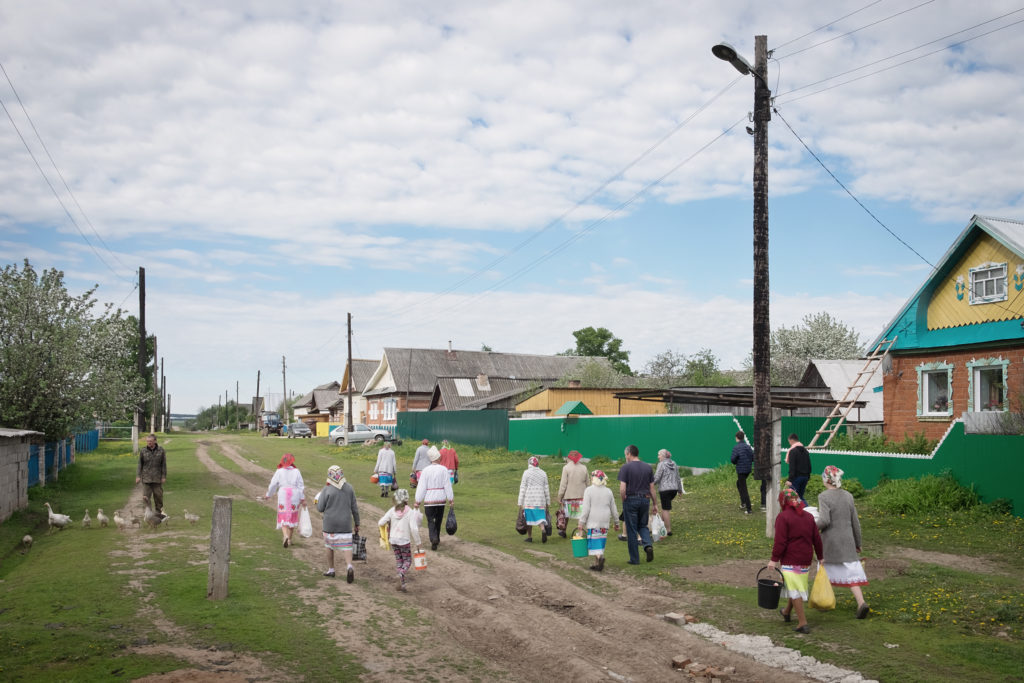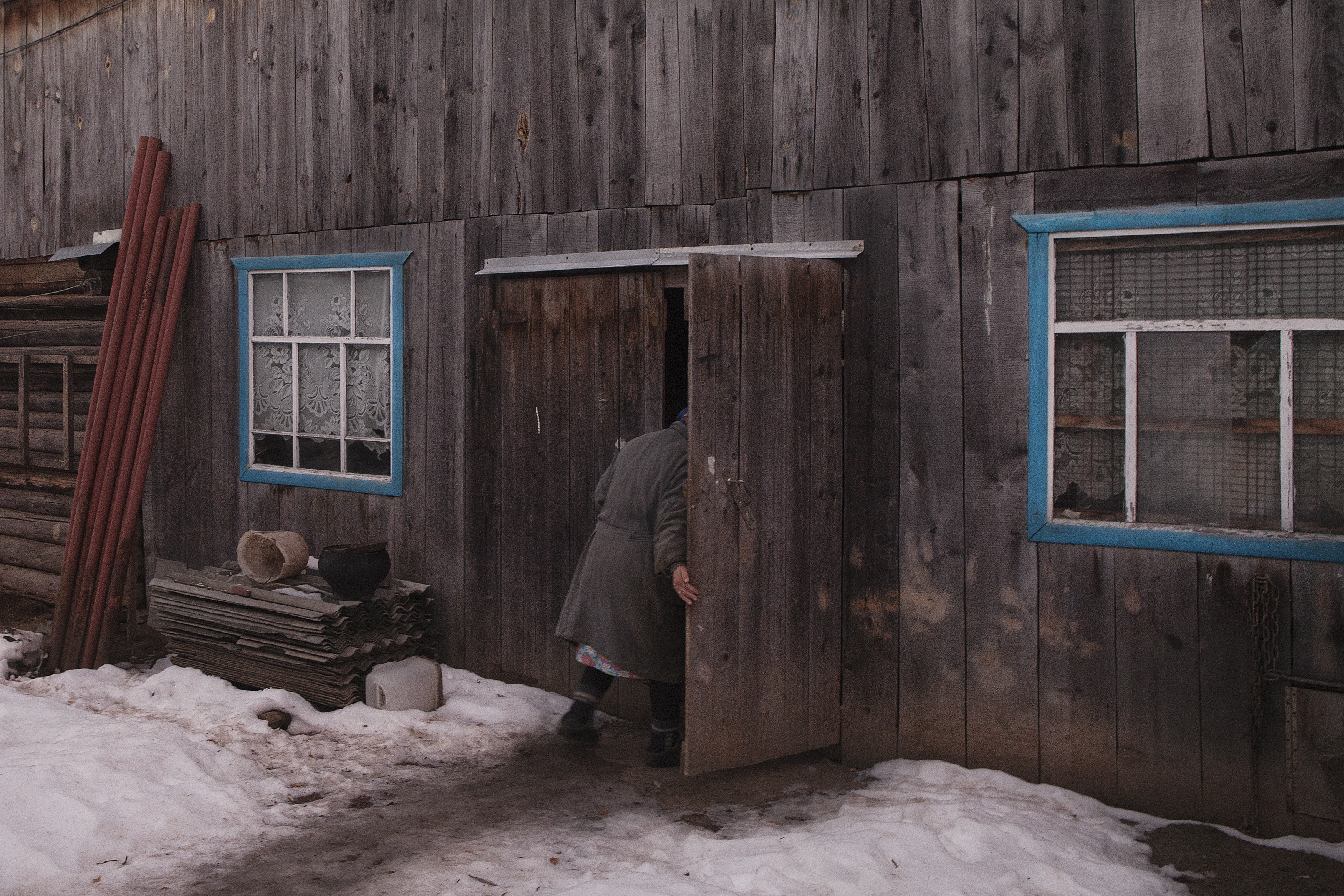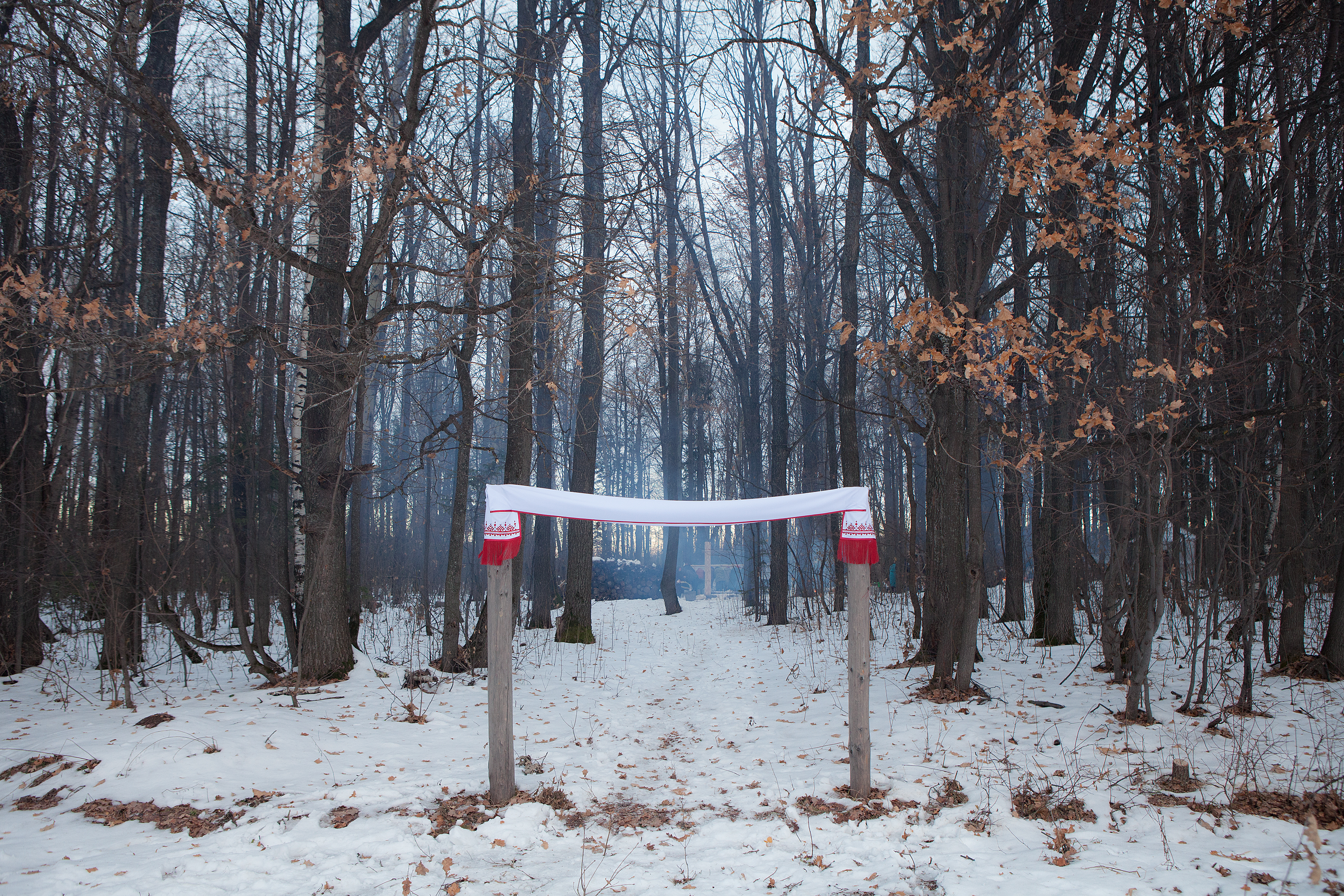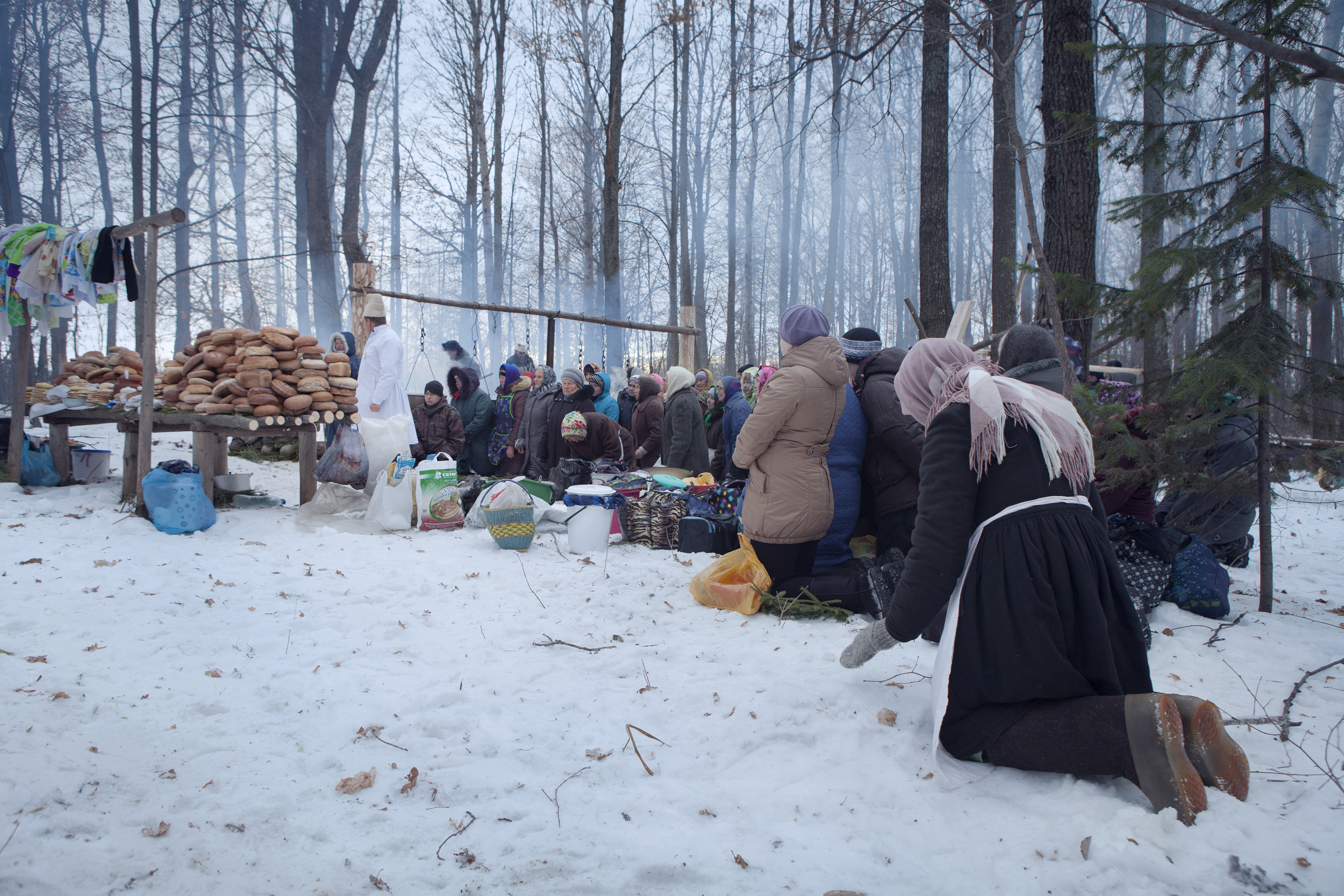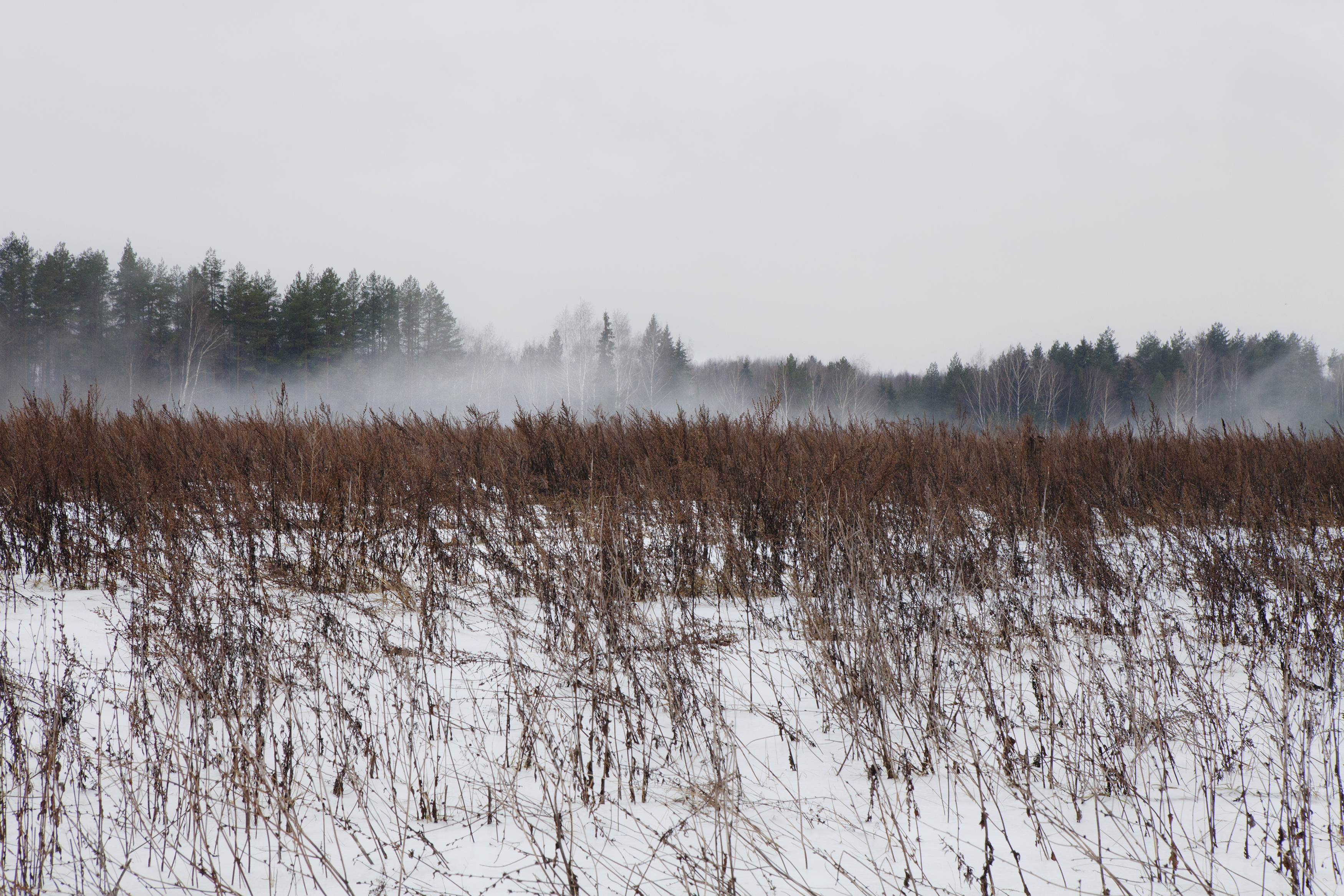


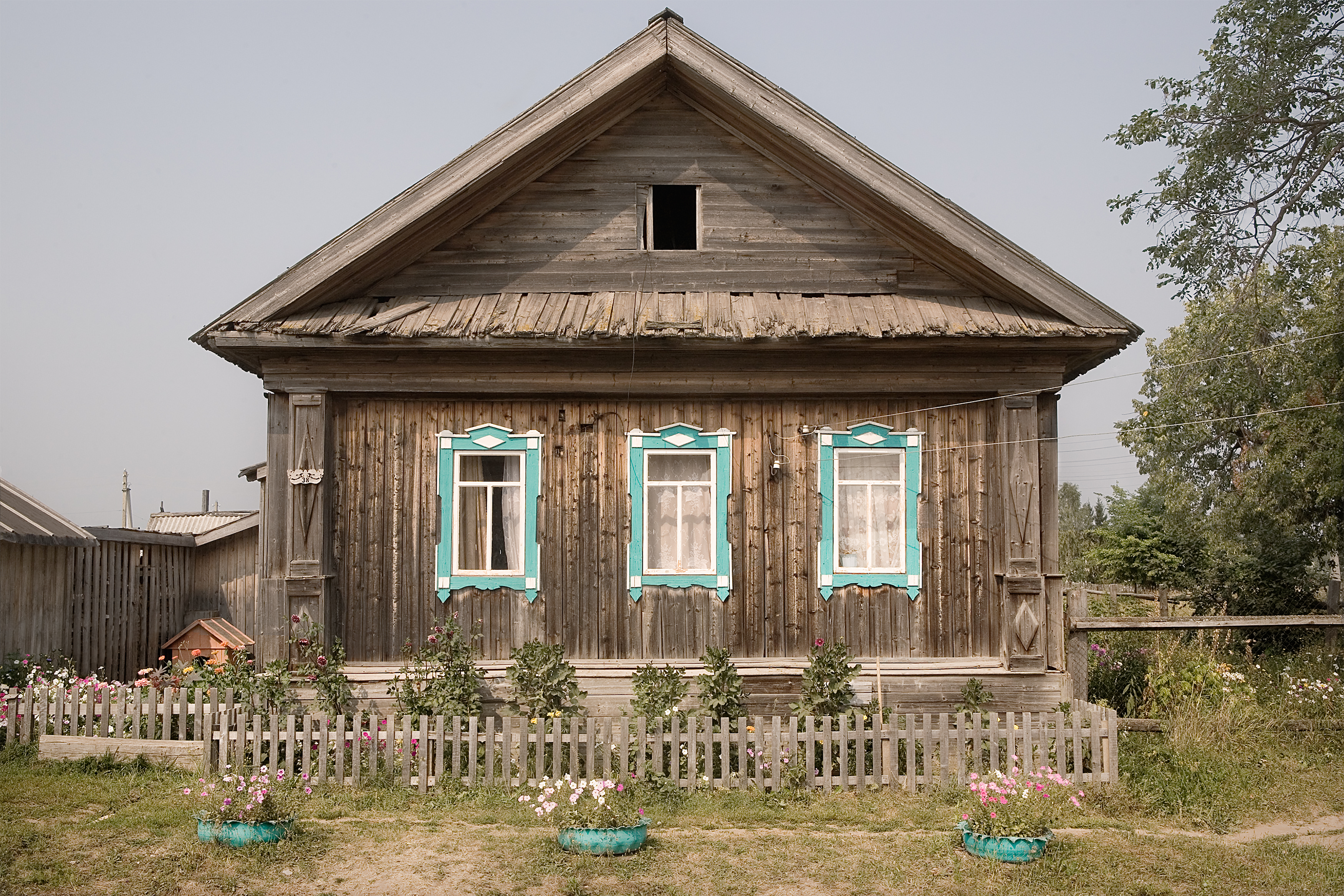




There is a population with Finnish ancestry living in a rural area near Joshkar-ola, in the Republic of Mari El, Russia. Settled in this area around the fifth century, they speak a language belonging to the Urallic family and use a modified version of the Cyrillic alphabet. They are called the Mari, the last pagan population of the West, which currently amounts to around 600,000 people organized in small villages.
Within these communities, everyday life is marked by profound spirituality: inhabitants live in a symbiotic relationship with nature, which exerts a magical religiosity on them and is celebrated as the basis of their existence. She is conceived and revered as a mother who protects her sons, beneficial as long as they do not try to destroy her. It’s in this way that in Mari El the cyclicity of the seasons merges with ancient pagan practices and faith and worship center around the gods of the four natural elements.

Alexander Tanigyn. The main “Kurt”. He is the maximum spiritual leader of Mari community. He inspires the community with his deep charisma, foresight and energy. He’s shepherd and beekeeper. Everyone turns to him to ask about the fate of families, villages, and crops. Even during the Soviet period, when the Mari as religious were persecuted, the officers turned to Tanigyn to ask for their future.
In the sixteenth century, this territory was annexed to the Russian Empire and Ivan the Terrible imposed Christianity. However, religious subjugation was never fully accepted. In fact, Mari people retain a significant amount of pre-Christian elements in their beliefs. In the twentieth century, with the rise of the Soviet Union, celebrating rituals and sacrifices was officially forbidden. During the Cold War many prominent personalities of the Red Army turned in secret to the Maris’ spiritual guidance, fascinated by their magical power, looking for answers to the possible outcomes of their military strategies. In the 90’s, right after the dissolution of the Soviet Union, the Mari’s economy – mainly based on agriculture and livestock – entered a period of severe crisis. Poverty and unemployment led young people to migrate to big cities in search of a stable future, abandoning their villages and their ancient traditions. However, in response to changing times, the community survives continuing to preserve spirituality as a collective essential resource.
The whole area is dotted with thousands of small villages. Many houses are abandoned. According to an ancient Mari tradition, when a family member dies, relatives have to leave the house. Everything inside is left exactly as it was at the moment of their loved one’s death. Nobody is allowed to live there anymore. The structure, together with everything inside it, is left to implode on itself and returned to nature.
The ritual of the swing is part of the annual celebrations of Mari people. Women in particular, one day a year get the swing to let their negative feelings fade away. A legend tells that once upon a time the daughter of God Yumo swayed on a swing in the sky. At one point she let herself fall and ended up in a wood. There she met a boy she fell in love with and she didn’t want to go back to the sky anymore. She decided to marry him. Thus the Mari were born.
Pamashial’s sacred grow. Villagers celebrating the Agaveriem ritual. This rite is celebrated at the end of the seeding season demanding the spirits not to make natural disasters such as storms that can destroy the crop. Pancakes, quail, eggs, hops and other food prepared by everyone the night before for the occasion, are put on the table of offers to the Gods of Spring.
On the occasion of the Great Ritual of November 1st, the spiritual leaders each year identify a small grove in which to celebrate it and in which, after the rite, no one will be able to enter for the following 5 years. A typical grove worship includes bringing all anxieties and grievances along to discuss with the priest, who then passes on the requests and desires of the individual to God. In the forests and along the river bank of the Volga, domestic sacrifices are brought along by the people. These sacrifices are most often geese, as they are considered the most sacred animal due to their ability to commune with earth, air, and water. The geese are calmed to ensure good wishes before they are sacrificed. The geese are cooked in huge industrial pots chained to the trees. The Mari people then communally cremate the skin, bones, and organs in bonfires at the grove in order to seek communion with nature.

